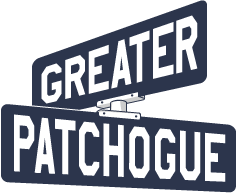This story was produced by The Hechinger Report, a nonprofit, independent news organization focused on inequality and innovation in education.
by Michael Hynes and William Doyle
We are two American public-school dads who just returned from a fact-finding trip through Finland.
We wanted to see what the United States could learn from an education system that consistently receives top marks from UNICEF, the OECD and the World Economic Forum.
Why should we bother to learn from a small country of just 5.5 million people that is less diverse than America, and that has a history very different from our own?
Many U.S. states are similar in population size and demographics to Finland, and education is largely run at the state level. In the economically depressed forest region of North Karelia — on the Russian border — where we spent much of our time, the unemployment rate is nearly 15 percent, compared with under 5 percent in America and our home state of New York. However, the U.S. child poverty rate is four times higher than Finland’s.
Finland is less diverse, and has much less immigration, than the United States. (This, though, is rapidly changing — we visited a high school in Helsinki that is as diverse as any American high school.) The foundations of Finnish society are communal trust and perseverance, while the United States focuses more on individual rights, competition and achievement.
Finland may have the world’s best schools, though they are far from perfect. But to ignore education insights from Finland is to make a dangerous strategic blunder.
Delegations and universities from China and around the developing world are visiting Finland to learn how to improve their own school systems, which often serve diverse and economically disadvantaged populations. Finland has a wide range of cognitive diversity among its own students, with a third receiving special-education services at some point in their school experience. Many of the insights that Finland has put into classroom practice have come from the United States and are applicable to children and cultures the world over. Singapore has launched a series of Finnish-style school reforms.
As Isaac Adaam, a public-school father and immigrant to Finland from Ghana, told us, if you don’t want to learn from the Finnish system because it’s not racially diverse, “I think that you’re missing the point.” The point, he said, is “the human values and the human principles that one learns in childhood. It doesn’t matter where you come from.”
As we traveled through Finland, we met with top government officials, education professors, classroom teachers and elementary-school students.
We were stunned by what we observed: A society that selects and respects teachers like elite professionals; a world-class network of vocational and technical schools; a school system that reveres and protects childhood and encourages children to experience joy in learning — where teachers shower children with warmth and attention; where children are given numerous free-play breaks; where special-education students are supported; and where children thrive.
In Finland, we heard none of the clichés common in U.S. education reform circles, like “rigor,” “standards-based accountability,” “data-driven instruction,” “teacher evaluation through value-added measurement” or getting children “college- and career-ready” starting in kindergarten.
Instead, Finnish educators and officials constantly stressed to us their missions of helping every child reach his or her full potential and supporting all children’s well-being. “School should be a child’s favorite place,” said Heikki Happonen, an education professor at the University of Eastern Finland and an authority on creating warm, child-centered learning environments. His colleague Janne Pietarinen explained, “Well-being and learning are intertwined. You can’t have one without the other.”
In short, we glimpsed an inspiring vision of an alternative future for American education, a future that we believe that all of our children deserve right now.
How can the United States improve its schools? We can start by piloting and implementing these 12 global education best practices, many of which are working extremely well for Finland:
1) Emphasize well-being. Make child and teacher well-being a top priority in all schools, as engines of learning and system efficiency.
2) Upgrade testing and other assessments. Explaining why he doesn’t need standardized tests to evaluate his students, one Finnish teacher said: “I am assessing my students every second.” Stop the standardized testing of children in grades 3-8, and “opt-up” to higher-quality assessments by classroom teachers. Eliminate the ranking and sorting of children based on standardized testing. Train students in self-assessment, and require only one comprehensive testing period to graduate from high school.
3) Invest resources fairly. Fund schools equitably on the basis of need. Provide small class sizes.
4) Boost learning through physical activity. Give children multiple outdoor free-play recess breaks throughout the school day to boost their well-being and performance. We observed schools in Finland that give children four 15-minute free-play breaks a day.
5) Change the focus. Create an emotional atmosphere and physical environment of warmth, comfort and safety so that children are happy and eager to come to school. Teach not just basic skills, but also arts, crafts, music, civics, ethics, home economics and life skills.
6) Make homework efficient. Reduce the homework load in elementary and middle schools to no more than 30 minutes per night, and make it responsibility-based rather than stress-based.
7) Trust educators and children. Give them professional respect, creative freedom and autonomy, including the ability to experiment, take manageable risks and fail in the pursuit of success.
8) Shorten the school day. Deliver lessons through more efficient teaching and scheduling, as Finland does. Simplify curriculum standards to a framework that can fit into a single book, and leave detailed implementation to local districts.
9) Institute universal after-school programs. Include play clubs, homework help, decompression and relaxation time, as well as academic and non-academic enrichment activities. Make them free or low-cost. This will significantly boost parent and family well-being by allowing parents to harmonize their schedules with their children’s.
10) Improve, expand and destigmatize vocational and technical education. Encourage more students to attend schools in which they can acquire valuable career/trade skills.
11) Launch preventive special-education interventions early and aggressively. Destigmatize and integrate special-education students as much as possible, as is done in Finnish schools.
12) Revamp teacher training toward a medical and military model. Shift to treating the teaching profession as a critical national security function requiring government-funded, graduate-level training in research and collaborative clinical practice, as Finland does.
It is time for the United States to launch major new partnerships with Finland to collaborate on teacher training, professional development and educational research and innovation.
We have an enormous amount of work to do, but the children of America — especially our disadvantaged students — deserve nothing less.
This story on Finland and international education was produced by The Hechinger Report, a nonprofit, independent news organization focused on inequality and innovation in education. Sign up for our newsletter.
Michael Hynes is the Patchogue-Medford School District superintendent and a monthly opinion columnist for GreaterPatchogue. He lives in Sayville.
William Doyle is a Fulbright Scholar whose child attends a diverse public school in New York City and, when Doyle is lecturing at the University of Eastern Finland, a school in Finland.
Photo by Santi Vedrí on Unsplash























